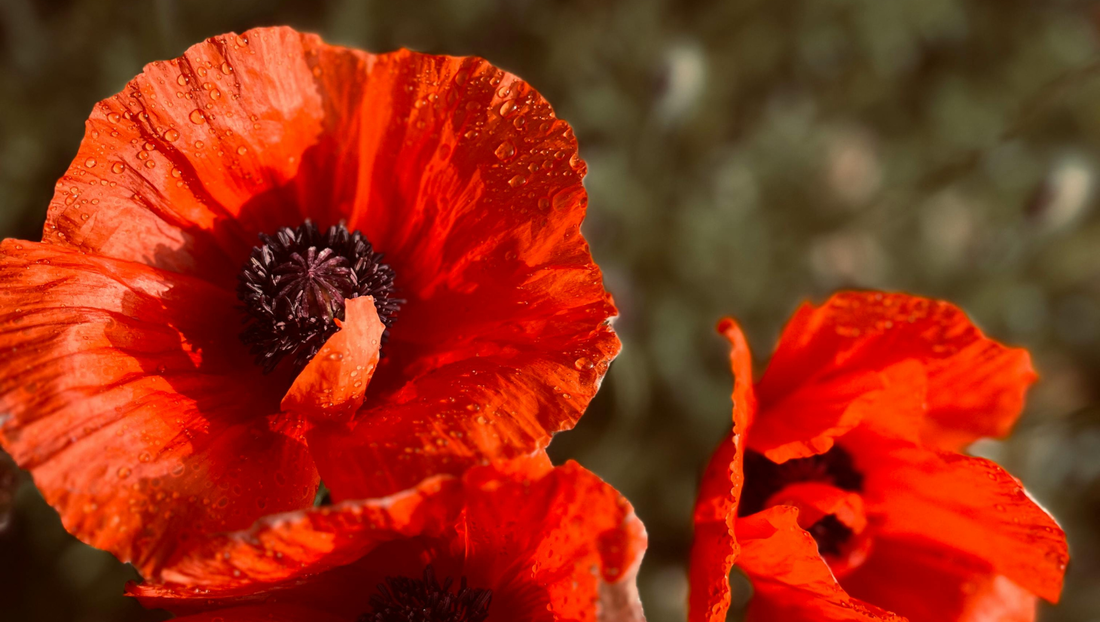
Poppies: The Flower of Remembrance in World Wars
Share
Few flowers carry as much historical and emotional weight as the poppy. Its vivid red petals, delicate texture, and symbolic black center have made it an enduring emblem of remembrance, particularly in connection with World War I and II. For flower lovers and customers seeking flower delivery in Thailand, especially through a Bangkok florist offering same-day flowers, understanding the rich history and significance of poppies adds a deeper layer of meaning to your bouquet.
Origins and Early History
Poppies (Papaver spp.) are native to Europe, Asia, and parts of North America. Traditionally, they thrived in wild fields and meadows, often blanketing the land with brilliant red, orange, or white blossoms. Ancient civilizations associated poppies with sleep, peace, and death, due to their sedative properties and ephemeral blooms.
It was, however, during the devastation of World War I that the poppy gained its globally recognized symbolic role. The barren battlefields of Flanders in Belgium were among the few places where poppies were able to flourish amid the trenches, turning scarred landscapes into poignant seas of red.
Poppies and World War I
The publication of the poem “In Flanders Fields” by Lieutenant Colonel John McCrae immortalized the poppy as a symbol of remembrance. The poem described the resilience of these delicate flowers growing among the graves of fallen soldiers, capturing the world’s imagination and cementing the poppy as an emblem for honoring those who sacrificed their lives.
Today, red poppies are worn on November 11th, Remembrance Day, in many countries as a tribute to the courage and loss experienced during the World Wars. White poppies have also emerged as symbols of peace, while other colors may represent hope and renewal.
Symbolism and Cultural Significance
- Red Poppy: Remembrance of soldiers, courage, and sacrifice
- White Poppy: Peace, hope, and reflection
- Orange/Yellow Poppies: Creativity, imagination, and warmth
Beyond commemoration, poppies appear in art, literature, and fashion, reminding us of the delicate balance between beauty and transience. They are celebrated in paintings, musical works, and cultural ceremonies around the world.
Poppies in Modern Floristry
Despite their historical associations, poppies are also cherished for their natural beauty in floral arrangements. They bring bold color, airy elegance, and a unique shape that stands out in bouquets.
- Wedding bouquets: Their bright, vivid petals complement other seasonal blooms.
- Memorial arrangements: Red and white poppies continue to honor remembrance traditions.
- Special deliveries: In Thailand, discerning customers can find poppies through select Bangkok florists offering same-day flower delivery, making them ideal for personal or commemorative gifts.
Poppies pair beautifully with other flowers like ranunculus, lisianthus, or garden roses, creating arrangements that are both symbolic and visually stunning.
Caring for Poppies
To maintain the delicate beauty of poppies in bouquets:
- Place in cool water immediately upon delivery
- Trim stems at an angle to maximize water absorption
- Keep away from direct sunlight and drafts to prolong vase life
These simple steps help preserve their vibrant colors and elegant form, ensuring that your bouquet delivers both meaning and beauty.
Final Thought
The poppy is more than just a flower — it is a symbol of history, memory, and hope. Red poppies whisper stories of courage and sacrifice, white poppies invite reflection and peace, and every bloom reminds us that even in the darkest times, beauty can emerge.
Whether you are ordering same-day flowers in Bangkok or sending a meaningful bouquet anywhere in Thailand, incorporating poppies into your arrangements allows you to honor tradition, history, and heartfelt emotions all at once.
